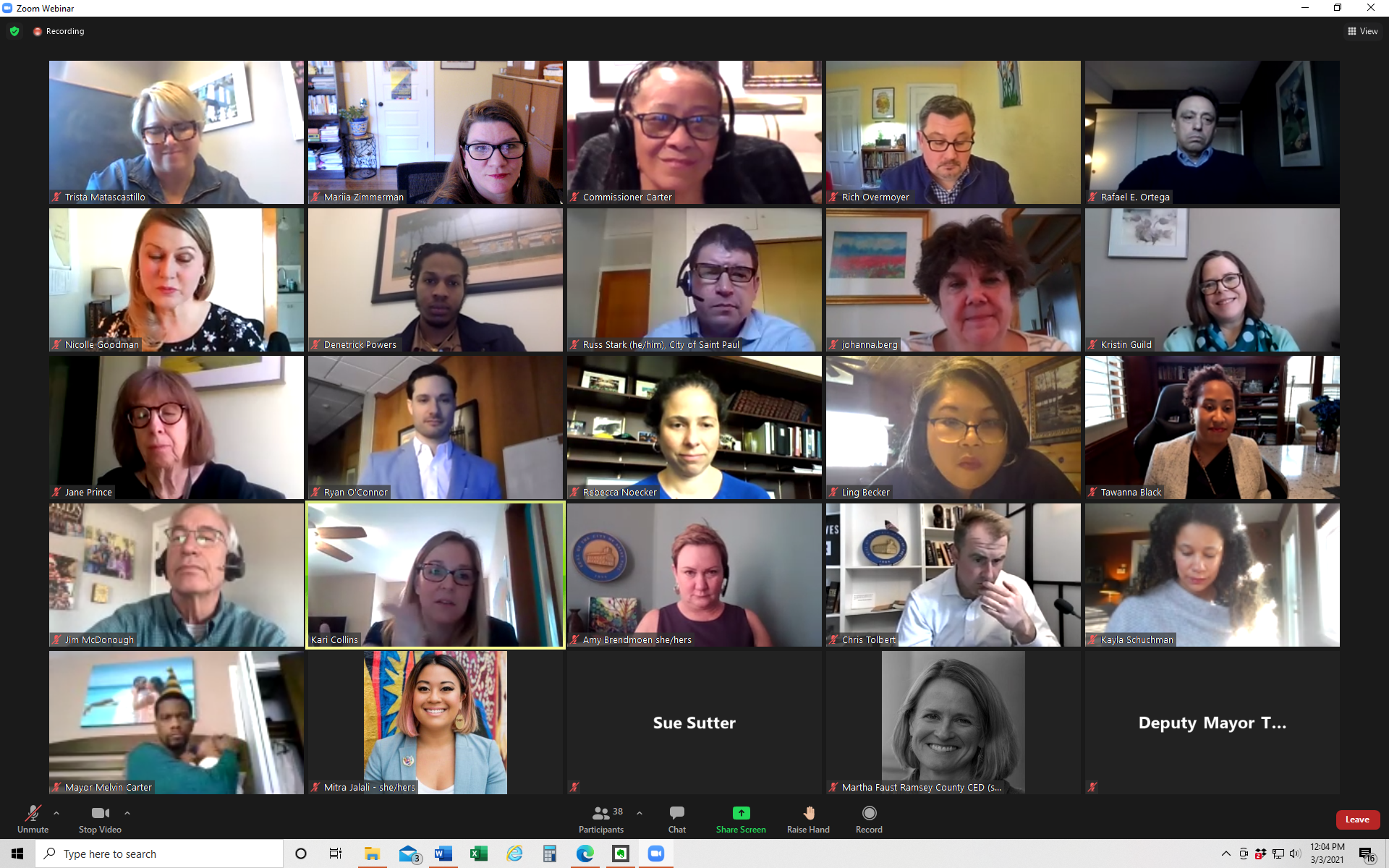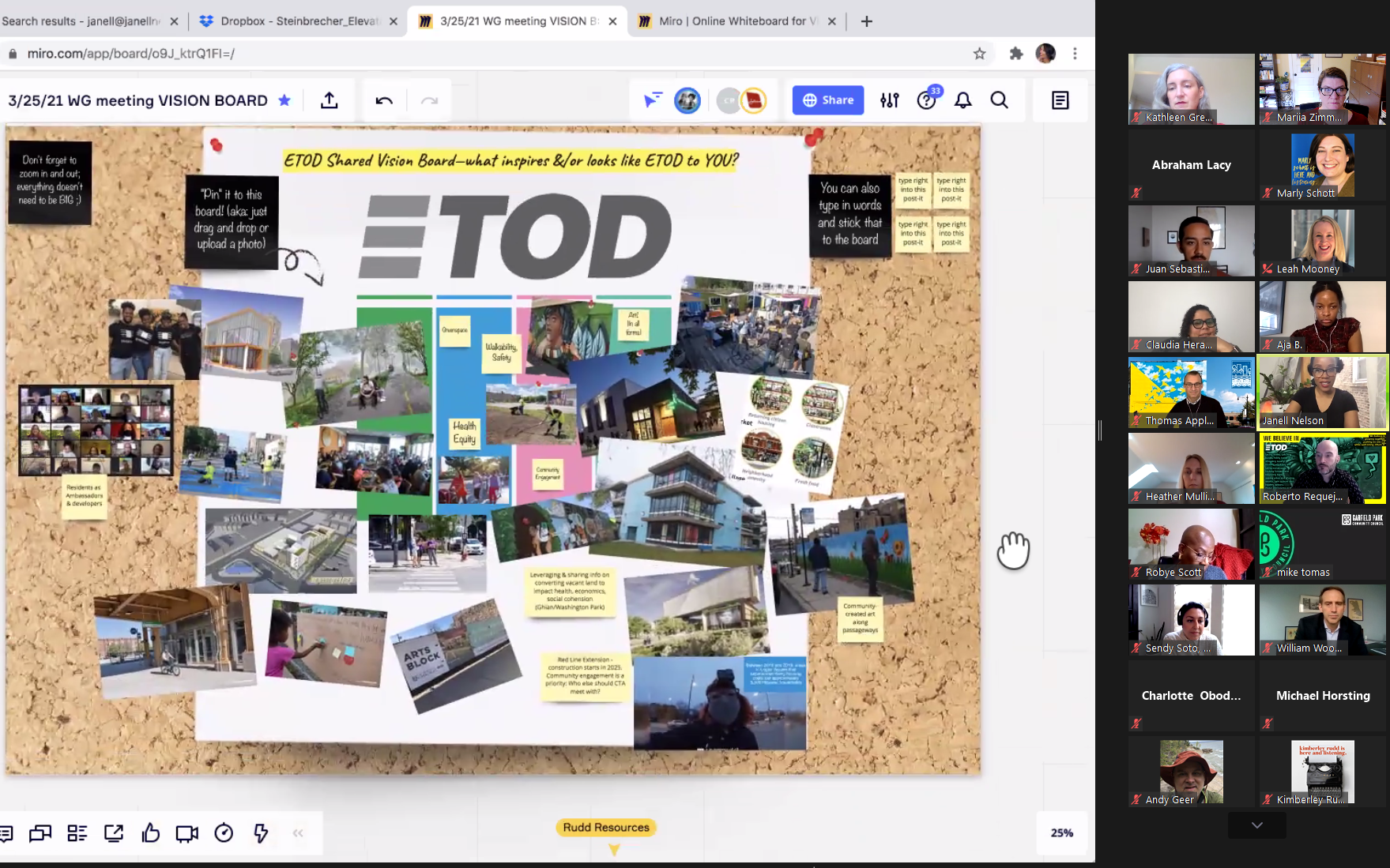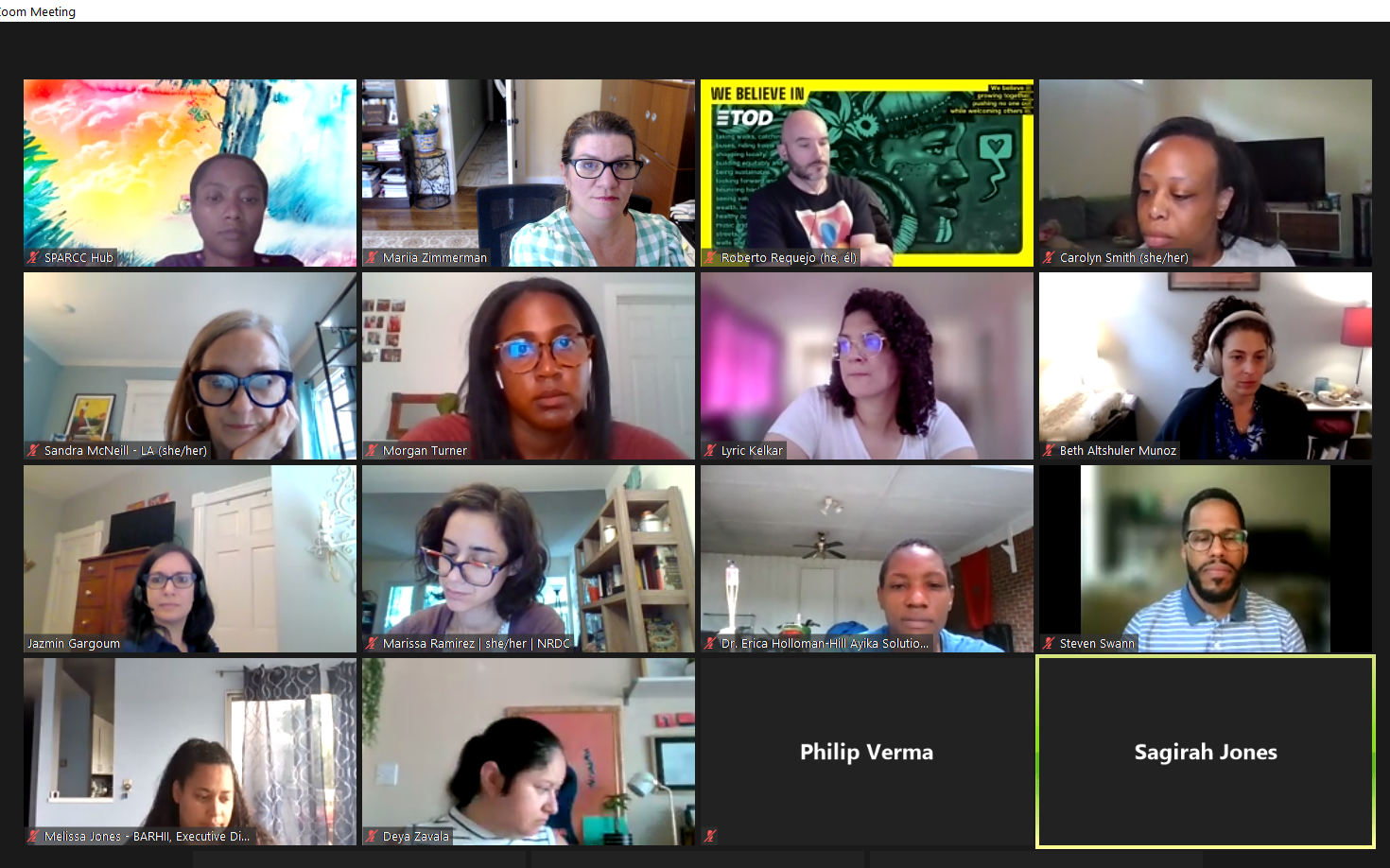We Achieve the Most, When We Achieve Together: A look back at 2021
The new year begins with many of the anxieties and worries of last year hanging on with a tenacious grip. Yet against this backdrop I cannot help but feel the glimmers of hope. Sometimes when we are at our breaking point, we find our true strength. Sometimes when things fall apart, we rebuild better.
The last year was an incredibly busy one for MZ Strategies, filled with victories and achievements that frankly seemed impossible at the start of 2021. It is from that trajectory that I feel hope as we go into 2022. Indulge me in reflecting on a few of these and the lessons they provide for those of us seeking to create more inclusive and just communities.
From Planning to Action
MZ Strategies teamed with the Center for Economic Inclusion, Fourth Economy, Urban3 and NEOO Partners to craft Ramsey County, MN’s first Economic Competitiveness and Inclusion Plan with county leadership quickly putting the plan into action. Economic prosperity based on racial equity is the plan’s North Star, and unlike other plans I have helped to create it seamlessly weaves together housing, workforce development, and economic growth.
The focus on housing as a key element of economic prosperity for the County reflects the impacts that persistent and growing inequality have had on attracting, retaining and growing households and community wealth. Today, more than 37,000 Ramsey County families live at or below 30% of the area median income and face a shortage of 15,000 affordable housing units. The Plan won a silver award from the International Economic Development Council, but the more important measure of its impact can be seen in the commitment to action. After releasing the plan in March 2021, the County unanimously approved a $11 million levy for its housing and redevelopment authority in July to more aggressively fund affordable housing efforts identified as a key priority in the plan. The plan provided a roadmap for prioritizing federal American Rescue Plan funds. This includes a $74 million commitment by the County and City of Saint Paul announced in December to fund new affordable housing – one of the largest commitments by local leaders in the nation to address its housing crisis and unabashedly focus on the needs of those at the lowest income levels.
In June 2021, after an eighteen-month process heavily focused on community engagement and cross-agency coordination, the City of Chicago’s Plan Commission adopted the Equitable Transit Oriented Development (ETOD) Policy Plan. MZ Strategies was a key partner in drafting the plan but make no mistake this was not a consultant driven effort. Rather it was a process that embodied full partnership between City departments including the Mayor’s Office, regional agencies, and local community and neighborhood stakeholders. The policy plan includes dozens of recommendations, organized across three key themes: Building the City’s capacity to support ETOD; Making ETOD required, easier and more equitable; and Embedding ETOD principles into Chicago’s citywide planning processes. The partnership developed to create the ETOD policy plan has been expanded and formalized to assist in implementing the ambitious plan without delay.
The results are already numerous and impressive! An ETOD pilot program was launched with 11 ETOD pilot projects selected in October 2021. Projects were developed by community-based partners ranging from non-profits to local developers of color. In partnership with Elevated Chicago and Enterprise Community Partners, the City of Chicago is providing $160,000 in microgrants and technical assistance to support project construction near transit stations across Chicago. The winners were selected through a community-driven application process, with each winner receiving up to $20,000 and in the coming year will receive technical assistance from partner members. The city is proposing $10 million more in its 2022 budget to support these and other citywide eTOD efforts. In December, the City’s Department of Housing announced a $1 billion investment to preserve and expand affordable housing. Of the 24 projects announced for funding, 18 are ETOD locations.
MZ Strategies was the lead researcher for a forthcoming Transit Cooperative Research Program (TCRP) research synthesis on coordination of public transit and affordable housing. The majority of research, agency surveys, case studies and writing occurred in the first nine months of 2021, and hopefully the report will be published in early 2022 by the National Academy of Sciences. While a research synthesis may not seem the most exciting of projects, this was an incredibly important one for me personally. My entire career has focused on the intersection of housing, development and transportation with a focus on transit. Over the past two decades I have had the chance to elevate these issues and advance the practice through my work on Capitol Hill, at USDOT and HUD, co-launching Transportation for America, starting the Washington DC office of Reconnecting America and the Center for TOD, and in my private consulting. In framing the TCRP research approach, MZ Strategies pushed to look at coordination across planning, fares and service decisions, and ETOD with a focus on the people who live in affordable housing.
Artwork by Mayumi Park
The siloes between transportation and housing are very real. These siloes prevent action at all levels of government to address the growing crises that have been building for decades despite the many plans, mountains of data, and policy recommendations that have highlighted this growing challenge. While actions like those being taken by leaders in Ramsey County and Chicago inspire me and give me hope, the hard reality is that in most cases investments, plans, and programs do little to fully address the housing and transportation needs especially of low-income households that include children, people with disabilities, seniors and many essential workers.
In the survey conducted for the TCRP synthesis we found most transit agencies who responded do not prioritize affordable housing and low-income residents in their service decisions, fare policies, or planning processes. Affordable housing providers and employers also do a poor job of taking the transportation cost burden and accessibility factors into their location decisions. Here in my hometown of Richmond, VA this plays out daily. While our regional transit agency, GRTC did a terrific job of providing essential transit service throughout the early months of the COVID pandemic, riders currently face reduced and unreliable service which is particularly acute in those neighborhoods with some of the highest concentrations of affordable housing; and only 5% of bus stops across the system have shelters, benches or sidewalks.
I am hopeful that the $39 billion included for transit within the recently passed federal infrastructure bill can be used to meet the mobility needs of transit riders and to better coordinate transportation with housing, whether through transit, bicycle, electric vehicle or shared use mobility investments. Congress must also pass the Build Back Better legislation that includes critical funding for housing, and a new $10 billion program specifically to coordinate housing and transit. Beyond funding though. Achieving inclusive development requires fundamental changes to how we plan for housing and transportation.
This brings me back to my projects in Minnesota and Illinois, and why they give me hope for the year ahead. As I wrote about last month, unprecedented amounts of federal transportation funding are coming. What we do with this ultimately rests on the actions and priorities of local, regional and state leaders. In Chicago and Ramsey County, I see the seeds of a much more fertile and inclusive future for how to approach planning.
In both the planning process itself was re-imagined from being one that was government driven or lead by consultants to one of co-creating the process, products, and action plan. This led to remarkable shifts in spending priorities and early but sustained implementation. I believe this type of devolution of planning processes holds the key for an inclusive recovery. Let me break this down a bit.
Redesigning How We Plan to Achieve Equity
Ensure Timelines and Budgets Reflect Values. The challenges of undertaking community outreach and engagement during the pandemic were significant. Members of the consulting team pushed the County to re-imagine the ways we would do engagement, and to ensure that different stakeholders and parts of the County felt heard. This required the County to shift budget line items to put more resources into community engagement and to fund local artists. It meant expanding the timeline rather than rushing to a false deadline. Data analysis was a significant portion of the budget, but the equitable engagement process was also sufficiently resourced. In Chicago, engagement was co-designed from the beginning between community partners and the city (This webinar hosted by Rail Volution and SPARCC provides a deeper dive on the Chicago ETOD engagement process)
Create Structures for Different Levels of Engagement. Both processes utilized advisory committee members that represented a range of grass tops leaders, academics and local government partners; but also created neighborhood advisory teams (Ramsey) or working groups (Chicago) to help ground truth data and inform the policy questions and tailor recommendations. Virtual forums and open houses were held, some targeted to specific geographies or stakeholder groups and agendas designed to enable participants to ask questions. We made the space to listen, not just to share data or findings. At each point along the process, elected leaders renewed their commitment to equity.
Co-Design Process and Product. Ramsey County and City of Chicago staff viewed the consultant team as partners in this work and we each held each other accountable. Racial equity was embedded into who was on the team, whose voices were prioritized, and how we worked both via internal work agreements and external engagement processes. Lived experiences were recognized and valued. This is very different than many other public sector planning processes I have engaged in where government is treated as the client, there is limited engagement between consultant team members, or equal access of all members to government staff.
Plan for Action. Before finalizing both plans, processes were further modified to develop a set of commitments to action that created buy-in from numerous partners inside government but also with local, regional and state partners including in philanthropy, and community-based organizations and institutions. Both plans include commitments to tracking performance and longer-term accountability to achieve recommended actions.
Invest in Community Leadership. Through the incredible work of Elevated Chicago, a diverse coalition of community organizations, regional partners and funders, a priority was placed throughout the process from plan development to implementation to use leverage ETOD as a tool for building community leadership. Rather than seeing ETOD as a specific development project or the plan as an internal government document, Elevated Chicago invested resources and designed processes that help to train, elevate, and amplify community leaders as ETOD champions. This included making the space with government partners to share concerns, grievances, and fears not just to be cheerleaders. Making the time to build trust, to develop the tools to enable local leaders to succeed, and to ensure that the concerns raised were heard all matters. Too often community engagement is treated as transactional, and not as a series of investments to build community capacity and to grow the next generation of civic leaders.
Invest in Community Based Organizations (CBOs). Through its Equitable Ambassadors Development Program, stipends and local grants, Elevated Chicago is providing resources that leverage and supplement public funding. Yet, Chicago’s ETOD work illustrates that public agencies must also invest in CBOs working in traditionally marginalized neighborhoods or with underrepresented populations to help build and sustain their capacity. The technical assistance resources being provided through the ETOD pilots include tapping staff and revising processes to access government information and permitting. Too often CBOs are overlooked as intermediary partners or are asked to play this role without funding. Creating more transparent pathways to share information, inviting CBOs to help design and evaluate proposals, and resourcing CBOS to be implementation partners all create sustained implementation including across elected cycles.
Commit to Transparency and Accessibility. Adapting to life during a pandemic sparked a wave of openness and innovation by some governments. We need more to follow suit, and for this greater and easier access to information to be sustained. This doesn’t only include enabling virtual participation in meeting and to provide comments; but committing resources and pursuing approaches that provide ongoing and accessible information. In Chicago, the City found resources to ensure that the draft ETOD policy plan was translated into several languages and a version was provided for those with visual impairments. ETOD partners included artists and communications specialists who helped to translate technical jargon so that it was easier for ordinary residents to understand and to provide comments. Social media is a great tool for outreach but requires government to adapt their traditional processes. A “We Heard You” campaign was used to provide feedback on comments received. For Ramsey County, NEOO partners created a public facing website during plan development for residents to respond to surveys, access information shared with elected officials and advisory members; and to track progress on the plan while providing feedback. Again, budgets should include funding to support these types of activities which are essential to building community trust, ensuring a diversity of voices are heard, and to creating more inclusive plans.
Planning for inclusive development should never just be about “the plan” or one specific project. Rather the focus must be on the long-term elements we are trying to achieve. We can achieve racial equity through power sharing to yield improved outcomes across public health, mobility, economic and environmental indicators.
There is already a rush to spend the billions of dollars in new infrastructure spending. But if the focus is only on short term gains, be it how quickly the money was spent or did one interchange or pothole get fixed we are squandering this investment. Instead, we should be working to ensure that the billions in new funding also leverage billions of dollars in private, philanthropic and non-transportation funding. We should ensure that deep rooted racial and economic disparities are addressed through the process and products that are funded. We should strive to see this as an investment in the future of our country … not just its infrastructure but it’s people. This means changing our processes – sometimes slowing it down --- shifting our budget priorities, and inviting a diversity of community voices in to question our assumptions about what challenges we are trying to address and what solutions may be best suited to meet these needs.
Gratitude To Those Who Partnered with and Invested in MZ Strategies During 2021
In reflecting on the past year, I’d must also acknowledge the incredible clients and partners that I was privileged to work with, learn from and together influence more equitable outcomes during 2021!
AARP (MZ Strategies is supporting the AARP Livable Communities Policy Team and the AARP Equity by Design team, and looks forward to continued collaboration in 2022 on state and local transportation policy issues)
Elevated Chicago ETOD (Gratitude and appreciation to core ETOD members Roberto Requejo, Marly Schott, and Genevieve LaMarr LeMee (Elevated Chicago), Janelle Nelson (JNJ Creative), Kimberly Rudd (Rudd Resources), Juan Sebastian Ares and Sendy Soto (City of Chicago), Jacky Grimshaw, Lesle’ Honore’ and Drew Williams (CNT), Kendra Freeman (MPC) and the many other incredible ETOD partners!)
Family Housing Fund (MZ Strategies and NEOO Partners collaborated with FHFund to study challenges and opportunities to preserve and expand small multi-family housing as a wealth building and neighborhood stabilization strategy)
Institute for Transportation and Development Policy (MZ Strategies supported ITDP’s US Program staff to develop a strategic plan to help expand their impact for sustainable transportation)
Metropolitan Transportation Commission TOD Policy update (MZ Strategies was part of the team lead by Strategic Economics working MTC to update their policy)
National Association of Development Organizations (It was an honor to be asked to share thoughts on the ways regional agencies are more deeply engaging in housing issues.)
Rail Volution’s Act2 Program (Mariia Zimmerman participated in several webinars throughout the fall to support local partners in Pottstown and Reading who are working to restore intercity rail service to this part of Pennsylvania.)
Ramsey County Economic Competitiveness and Inclusion Plan (A huge note of appreciation and gratitude to my partners at the Center for Economic Inclusion particularly Tawanna Black and Andrea Ferstan, Denetrick Powers and D’Angelos Svenkenson at NEOO, Rich Overmoyer and Jerry Paytas at Fourth Economy, and to the Ramsey County staff especially Kari Collins and Martha Faust for your incredible collaboration. And my gratitude to Josh Devine who managed our team in its first year)
Richmond Market Value Assessment Update (MZ Strategies is supporting the Richmond Memorial Health Foundation and other regional partners in updating the 2017 MVA to democratize data that can be used by neighborhood and regional stakeholders to address housing needs. A special thanks to Michael Smith at RMHF for his inclusive leadership!)
Strong Prosperous and Resilient Communities Challenge — After launching the SPARCC policy platform in early 2021, members of the SPARCC ETOD work group created a series of snapshots highlighting the impressive ways that partners in Atlanta, Chicago, Denver, Los Angeles, Memphis and the San Francisco Bay Area are putting ETOD into practice. (MZ Strategies continues to feel enormous gratitude to our partners at the Natural Resources Defense Council, Enterprise Community Partners, the Low-Income Investment Fund, and all the SPARCC funders and site partners)
Transit Cooperative Research Program Synthesis (Big thanks to co-researchers Dr Kate Howell, Ashley Posthumus, Oscar Martinez, and Chesley DeLeon for your incredible help throughout the process!)
TriMet Red Line (MZ Strategies supported ECONorthwest in their work to advise TriMet on ETOD opportunities as part of the Max Red Line TOD and station planning effort)








